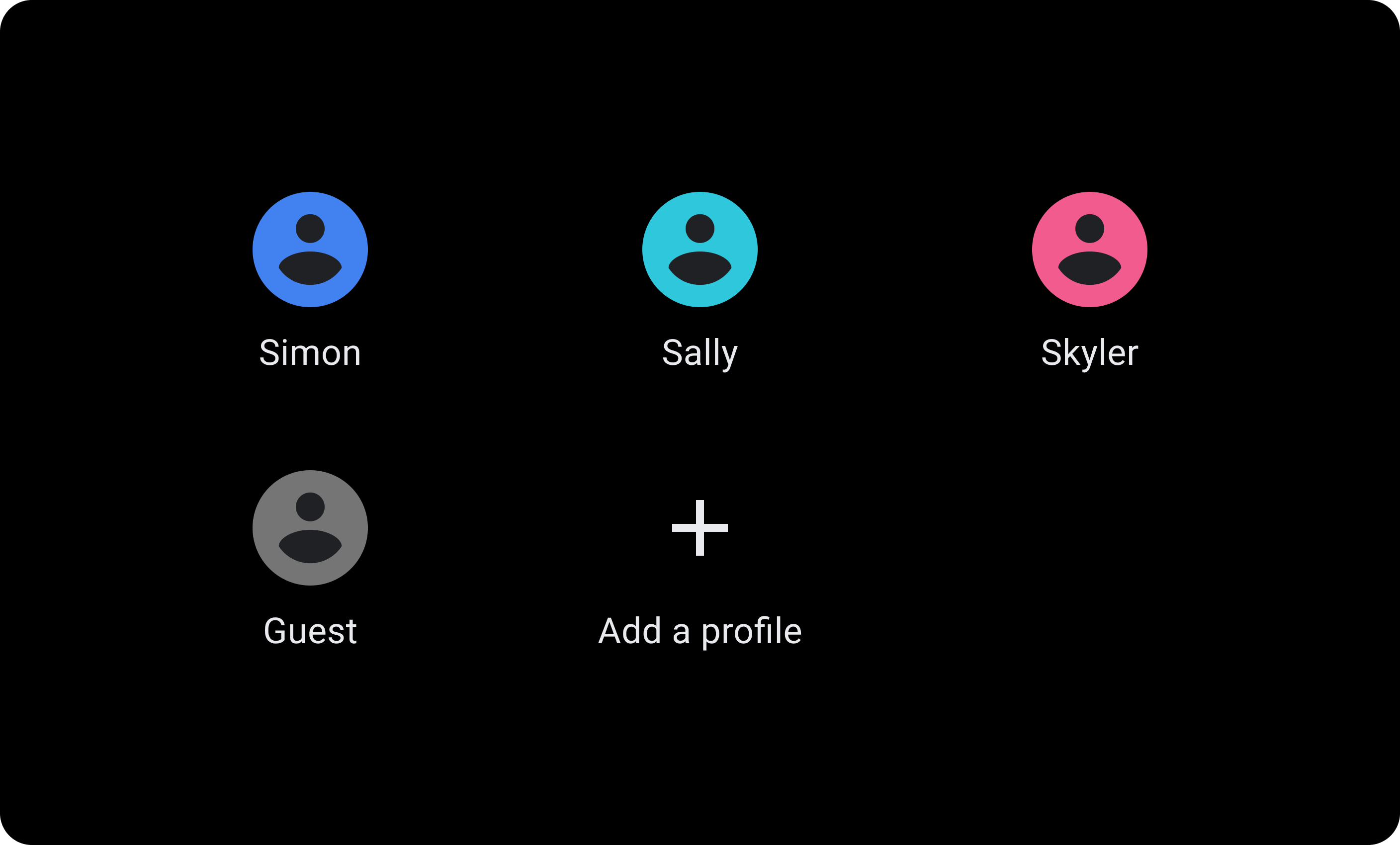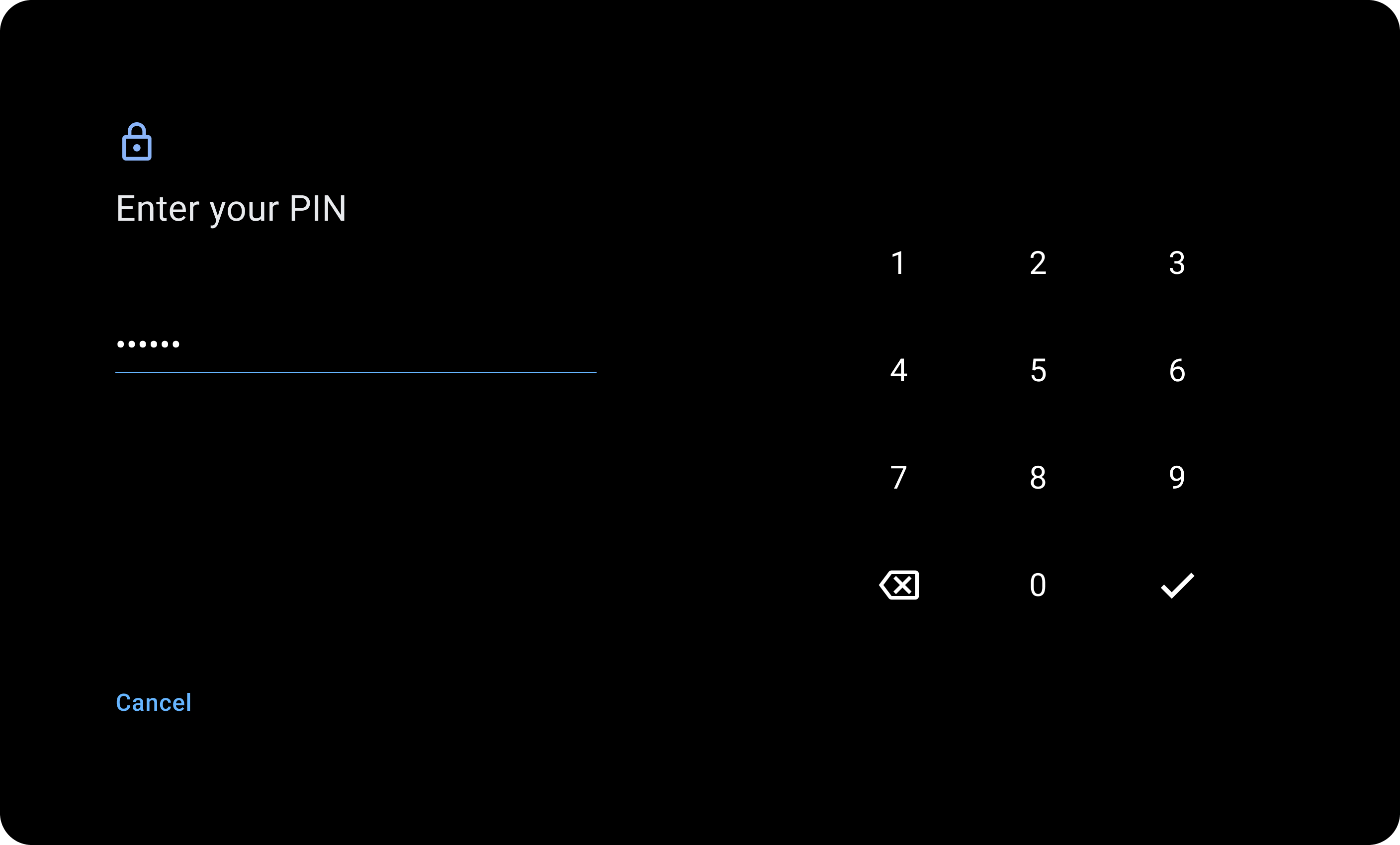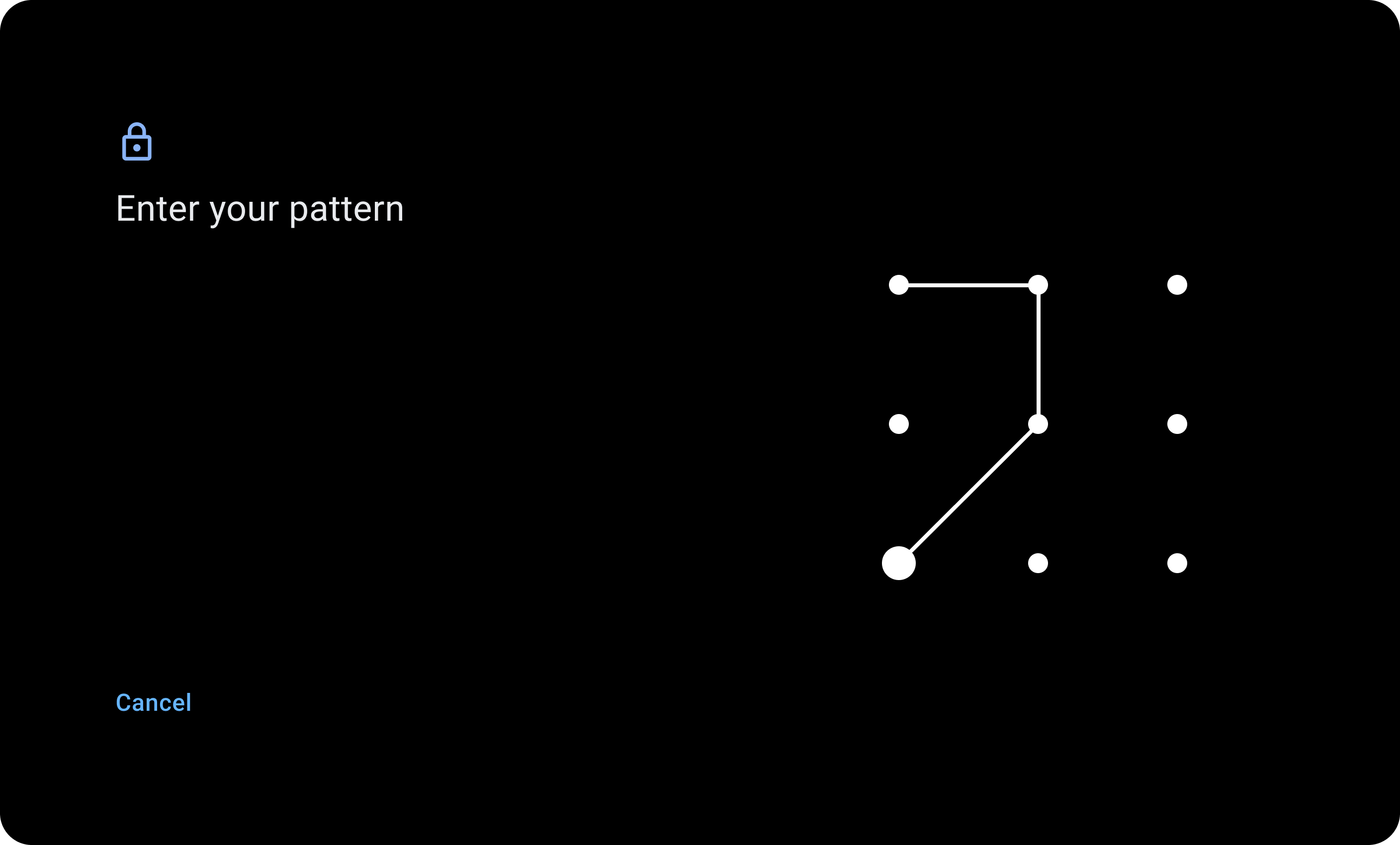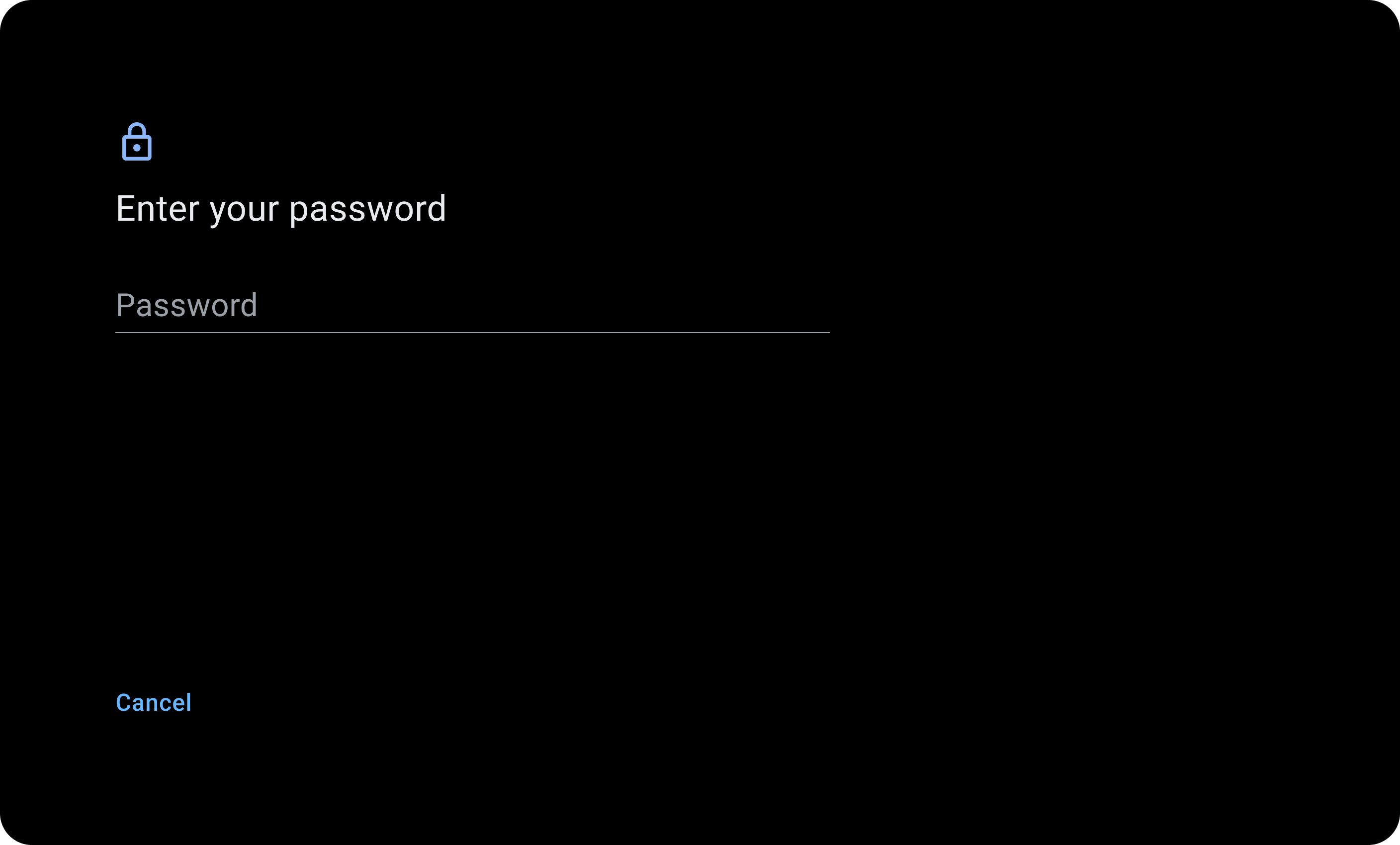借助汽车配置文件,用户可以在车内获得安全、个性化的体验。
用户可以使用个人资料来设置自己独特的驾驶和信息娱乐偏好设置,例如允许其访问通讯录以便拨打电话、访问个人媒体帐号或访问个性化地图。
为什么商家资料需要锁定
在 AAOS 设置过程中,用户可以选择设置个人资料锁定。由于车载显示屏位于共享空间中,因此个人资料锁定功能可帮助每位用户保护自己在车载设备中的身份。如果用户选择设置个人资料锁定功能,则每次开始新驾驶时,都必须解锁车载显示屏。
Google 建议您鼓励所有用户设置个人资料锁定。无论谁使用汽车,这种锁定方式都将保护用户的身份信息,并保障其个人信息的安全。
角色和流程
Google 会在 AAOS 中为 OEM 合作伙伴提供默认用户体验,包括用于创建个人资料和个人资料锁定的设计准则。OEM 合作伙伴可以选择自定义用户体验,类似于自定义其他 AAOS 用户体验的方式。
| Google 的设计角色 | 车辆 OEM 的设计角色 |
|---|---|
| 作为 AAOS 的一部分提供默认的个人资料体验 | 自定义 AAOS 个人资料体验或从头开始创建新的个人资料体验 |
用户历程
用户可通过以下用户体验历程在汽车中与其个人资料进行互动:
本部分将帮助您了解这些用户历程,以及 AAOS 中的个人资料体验如何应对这些历程,以及需要牢记的最佳实践。
选择配置文件
通过个人资料选择屏幕,用户可以快速找到现有的个人资料或添加新的个人资料。它是帮助用户控制其在汽车中的身份和个性化设置的网关,也为用户提供了保护共享空间中的个人资料的方法。
由于汽车通常支持多份个人资料,因此用户通常会看到一个显示完整个人资料数组的视图。

锁定个人资料
Android Automotive OS 集成了车载显示屏个人资料锁定功能,以便用户在车内保护其身份。与手机屏幕锁定类似,个人资料锁定是一种具有唯一性的 PIN 码、图案或密码,可保护用户在车载设备上的个人资料,让他们可以访问个性化设置和信息娱乐体验。
创建个人资料锁定
由于许多用户已在手机上使用屏幕锁定功能,因此他们很可能已经学习了偏好,并希望在车载显示屏上重复使用该方法。用户能够灵活选择,并可通过几个简单的选项锁定自己的个人资料。
选择首选锁定方法
用户可以选择使用 PIN 码、图案或密码等任意方式设置个人资料锁定。



从输入错误中恢复
为了帮助输错个人资料的用户在解锁个人资料时遇到错误,可以使用动画、颜色或消息来传达错误所在,并说明如何重试。

从忘记的个人资料锁定中恢复
有时,用户可能会忘记自己的个人资料锁定,并且 Android 没有为用户提供用于恢复或重置此锁定的默认机制。如果不存在重置选项,请务必为用户提供其他选择,以便继续使用汽车的信息娱乐系统。如要查看示例,请参阅有关个人资料恢复的最佳实践。
